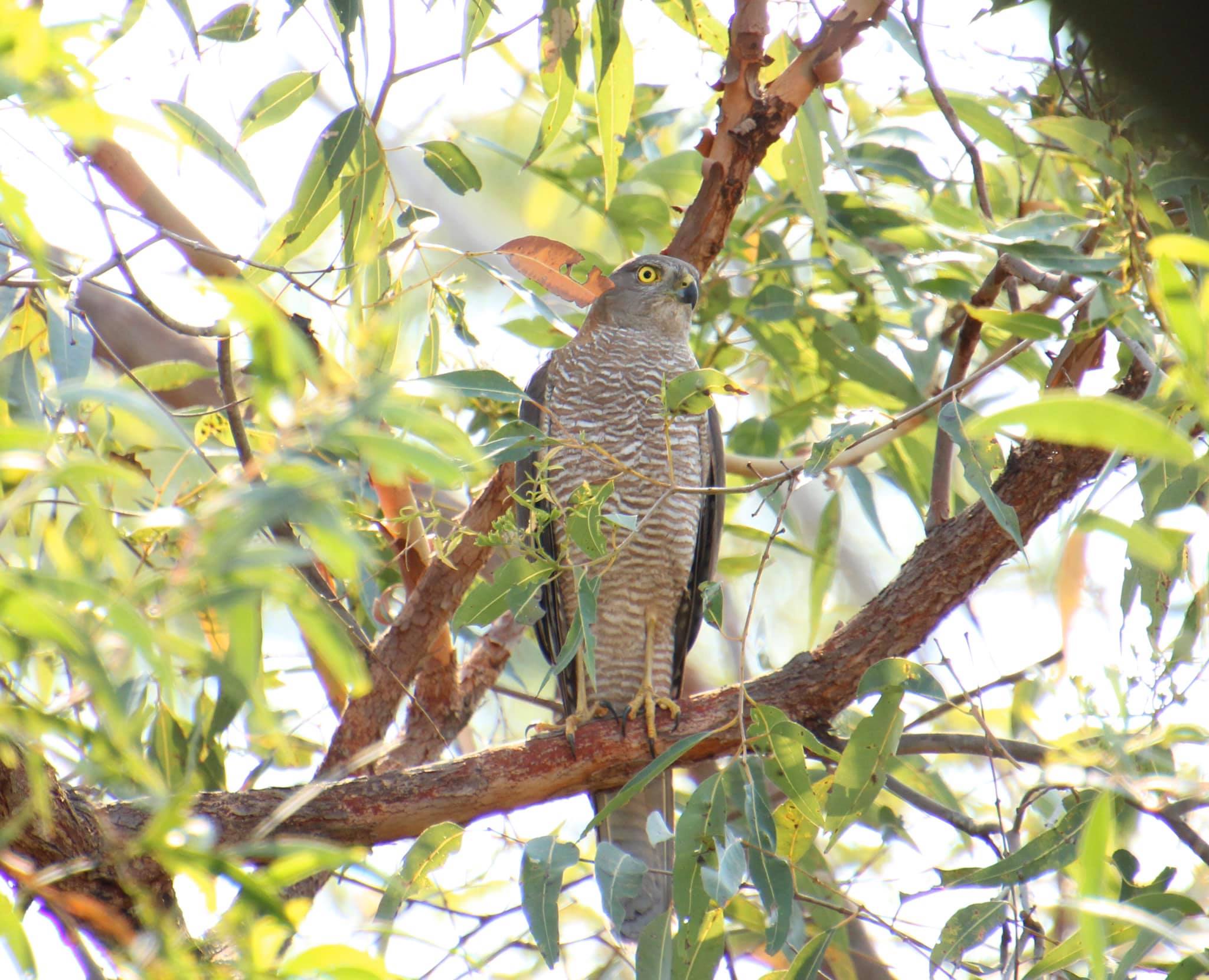Accipiter fasciatus
Description

Brown Goshawks (Accipiter fasciatus) are a medium-sized member of the raptor family that are widespread, but very secretive so they are rarely sighted. This bird of prey has brown plumage around the head, with a brown to slate-grey underside and a red-brown coloured collar across the upper parts of the neck. They also have distinctive narrow bars across their neck and chest that are red-brown and white. They have long legs that are yellow and they also have bright yellow eyes. Brown Goshawks are 37-55cm tall with males being much smaller than females. They are ambush hunters and rely on their stealth and agility to navigate through the trees hunting prey. Brown Goshawks will hide on low branches and launch with a sudden burst of speed to catch their prey by striking with their long clawed feet.
These raptors form strong bonds with their mates and breed from July to September where they lay 2-4 eggs which hatch after about a month. They build large nests of sticks on horizontal branches of the tallest tree in the area.
Brown Goshawk's inhabit dry, open eucalypt forests and woodlands anywhere including close to urban areas. They particularly like to reside around rivers and creeks with a canopy, and are rarely seen out in the open. They are distributed across Australia and also in some of the island nations to the north of Australia
Adaptations
- Sharp claws and beak for catching and killing prey
- Keen eyesight for locating prey
- Dull colouration and patterned plumage for breaking up shape in the forest (camouflage)
- Wings and tail designed for fast and agile flight through trees
Feeding relationships
- What I eat: birds, reptiles, frogs, large insects, mammals up to the size of rabbits and sometimes carrion (dead animals)
- What eats me: large carpet pythons
Interesting facts
Young Brown Goshawks will disperse over huge distances. Some individuals have been recorded establishing new territories almost 900km from where they were hatched.